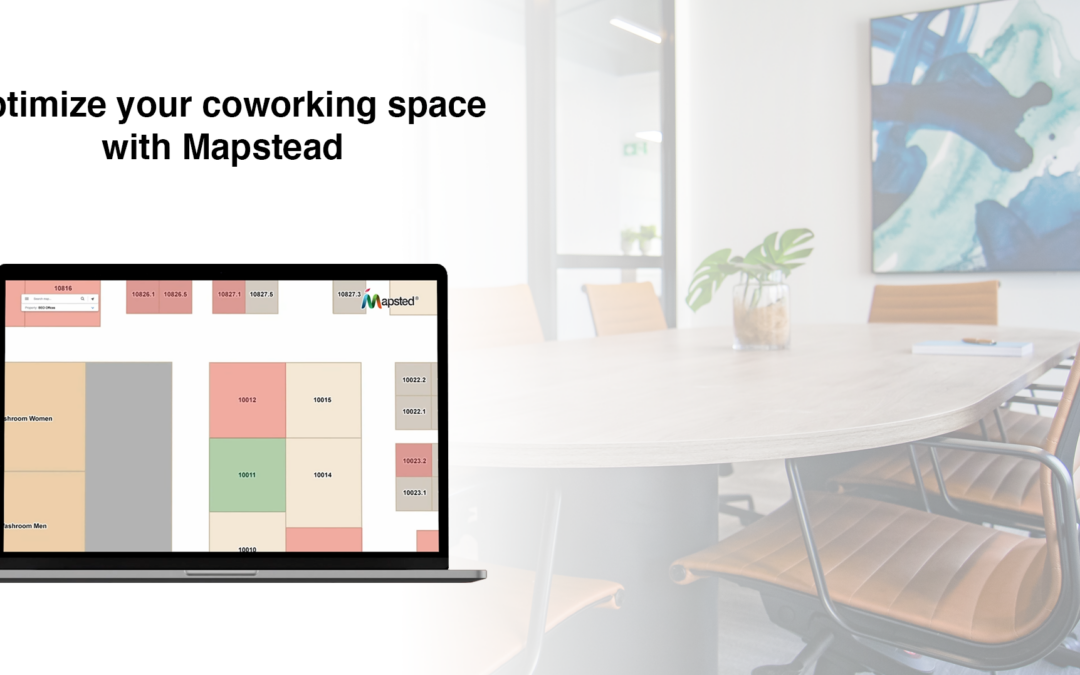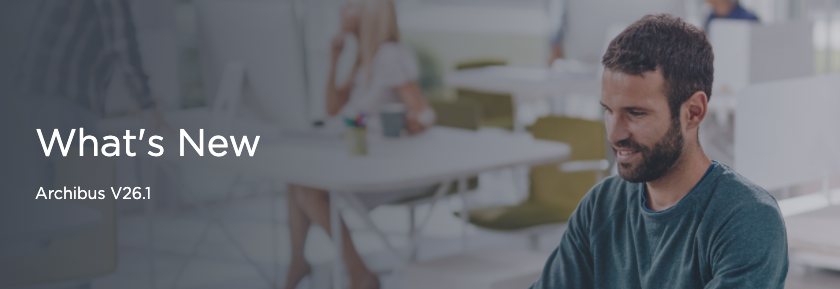
Protected: Important Changes for Archibus by Eptura License Model
Password Protected
To view this protected post, enter the password below:

To view this protected post, enter the password below:

Maximize desk bookings with your co-working space using Mapsted’s intelligent mapping system and increase your customer’s productivity by enhancing their office environment experience.
Mapsted’s advanced digital indoor map of your co-working space identifies available desks and offices which your customers can book online from anywhere, anytime.
Mapsted optimizes your co-working space in three fundamental ways:
Mapsted’s cutting edge mapping system does not rely on a separate app that your customers have to download. Easily integrate Mapsted’s customized digital map into your existing website, application, and kiosk.

Holland Gardens, one of Jersey City’s five public housing complexes, could soon look a lot more like its modern neighbors. After a public-private redevelopment plan was pushed forward this month, the site will be transformed into a 631-unit mixed-income development that preserves public housing and adds affordable senior units, homeownership condos and market-rate apartments.
The plan to replace Holland Gardens represents an innovative process for financing and designing ways to preserve public housing, and aims to avoid the pitfalls of previous redevelopment projects. The blueprint — which could become reality in as soon as four years — emerged from years of community engagement, and will include new amenities, retail outlets, services and community space. While some tenants and local leaders are excited, others aren’t so sure. The rebuilding requires involuntary relocation with a promise of a right to return when the project is completed.
As cities across the US struggle to fund repairs and maintenance for aging public housing, Jersey City’s approach to mixed-income development and community engagement could hold lessons for other city leaders. The project’s success may hinge on how the city manages the relocation process.
“It’s hard to do this well, even with the best of intentions, which it looks like they have,” said Susan Popkin, senior fellow at the Urban Institute and an expert on community engagement and public housing redevelopment. “I am all for anything that preserves public housing at this point; we’re on the verge of losing all of it.”
Residents and the city agree on at least one thing: Holland Gardens is in desperate need of repair.
The five-building, three-acre development, built in 1944, “has just fallen apart,” said Ty Matthews, one of the resident leaders at the complex. Matthews has lived in a 750-square-foot (229-square-meter), three-bedroom apartment in Holland Gardens with her family for a decade.
“We have mold and every two weeks there’s no hot water,” she said.
As Holland Gardens has deteriorated, the neighborhood around it has changed dramatically.
Downtown Jersey City boomed, growing its population by nearly 60% from 2010 to 2020. The surrounding Hudson County produced housing at over the twice the rate of New York City from 2010 to 2018, attracting numerous new residents and businesses.
While the median household income for Jersey City public housing residents is around $24,000, in the census tract surrounding Holland Gardens that number is now $111,000. And though 64% of Jersey City public housing residents are Black, Black households now make up only 15% of the surrounding tract.
At Holland Gardens, the city and the housing authority saw an opportunity to preserve public housing while leveraging Jersey City’s hot housing market to create additional affordability. On top of the 192 units of public housing, they’re adding 74 affordable senior units and 28 affordable homeownership units.
“What I think planners have recognized, and particularly in places like Jersey City, is that mixed-income communities are the best for giving people an opportunity to move into better economic situations for themselves and their families,” said Jersey City Mayor Steven Fulop.
To address critical disrepair, tearing down public housing has become a regular practice in US cities. A 2010 study by the Department of Housing & Urban Development estimated that the US is losing 10,000 units of public housing each year to disrepair. Under the Choice Neighborhoods program and its predecessor, Hope VI, public-housing redevelopments often ended up with fewer public housing units than they started with. Since the Faircloth Amendment, passed under President Bill Clinton in 1998, housing authorities cannot legally create new public housing unit; the best they can do is a one-to-one replacement.
Other financing mechanisms, like the controversial Rental Assistance Demonstration program, shift tenants to vouchers they use on site while generating funding for rehabilitation.
Holland Gardens’s planners have consciously steered away from those icebergs. The plan sidesteps the strings attached to federal programs by bringing in market-rate units while rebuilding all existing 192 units as public housing. Jersey City Housing Authority will remain as the owner, with an operating agreement with a private developer.
The complex adds a street grid to the site and includes four buildings: a senior building, a for-sale condominium building, a retail and community building and a residential tower for all the public-housing units and market rentals. “It’s going to be indistinguishable whether you are a market-rate or an affordable resident,” said Vivian Brady-Phillips, former director of the Jersey City Housing Authority.
Some residents have spent their whole life in Holland Gardens and aren’t eager to leave. Zoey, who preferred to go by her first name only, grew up in the development with her mother, who has been living there since she first moved to the US 55 years ago. “This is home. They’re like family here,” said Zoey.
Others are more optimistic.
“I’m looking forward to the transition and coming back to something bigger and better,” said Matthews. “Why wouldn’t you want something better?” said Olivia Smith, another longtime tenant.
Facilities and services at the new development, which will include a new branch of the Jersey City public library, incorporate what residents asked for in the community engagement process, an approach that planners described as “placemaking.”
“The fact that we’re preserving all of the public-housing units, and that we’re adding home ownership — I think that’s what’s really unique here,” said Brady-Phillips.
“This vision was always co-created,” she said. “It doesn’t mean that residents didn’t have concerns or trepidation, but it reflects priorities that residents raised.”
Even so, experts warn that community engagement processes don’t always reach all residents.
“Charrette processes tend to attract the resident leaders, probably more of the older residents,” said Popkin, referring to the act of involving as many stakeholders as possible in a development plan. “It ends up not representing the whole community because it’s very formal.”
That can mean that when projects start, some residents still feel blindsided by the process, said Brady-Phillips, who emphasized the importance of starting the dialogue early.
Ishmael, who also declined to include his last name, has been living at Holland Gardens for 10 years. For him, the most pressing concern was the promise of a right to return. He said he went to some of the meetings with the housing authority but found the uncertainty about relocation frustrating.
“I don’t know where they’re going to put us,” he said. “I don’t know if we’re going to come back.”
Residents will have several relocation options, and the city is providing counseling services to help each family figure out its best option. They can move to another public housing development, access a housing voucher on a private apartment, test the private market temporarily or take a cash payment and give up return rights.
It’s unclear if everyone will be able to get what they want. Extra public-housing slots are limited, some residents will have incomes too high to qualify for vouchers, which are already hard to use. Meanwhile, the local rental market is getting expensive fast.
Return policies have a messy history in public housing redevelopments, and tenants can fall through the cracks. Urban Institute’s Popkin said that because construction takes a while, some residents don’t end up returning. Mandatory relocations can be stressful for tenants, particularly the elderly and those with health issues. Some 43% of the heads of households in all of Jersey City public housing are over 62 years old, and nearly half of them have a disability, according to 2021 HUD data.
Zoey’s mother, for example, has limited mobility after fracturing her spine. “[She’s] not leaving until they drag [her] out of here,” said Zoey.
The housing authority has said it won’t review credit scores or income requirements for returning residents. Those policies are two best practices that researchers have identified to make redevelopments easier on residents.
“The biggest test for me is making sure that the existing Holland Gardens residents exercise that right of return and come back,” said Mayor Fulop.
When Chicago redeveloped 11 public housing sites around the turn of the century, residents rarely returned, opting instead for vouchers on the private market or staying put in other public-housing developments.
In the throes of a national housing crisis, other cities might look to Jersey City’s blending of public, affordable and market housing as a blueprint for how to finance their own ambitions while preserving public housing. Recently, New York City’s council speaker proposed building new apartments in between public-housing towers, moving tenants next door, and replacing buildings falling into disrepair.
“It’s a very, very complicated and difficult environment because there isn’t a lot of support at the federal and state levels to build new public housing,” said Mayor Fulop. “So you gotta be creative.”


Please join us for a LIVE Webinar “What’s New in Archibus V26.1″ which will be released in the following days.
Thursday, 29 April 2021 at 11:00 AM (EST)
Here is why you don’t want to miss this webinar:
Hoteling Self-serve Booking Tool Enhancements:
Other Enhancements in V26.1:
Upon registration you will receive an email with the Webinar’s URL. It makes sense to register even if you can’t make it on Thursday to receive a link to the recorded webinar if you registered and couldn’t attend.
Download:
.

Things like flexibility, insights, and collaboration are a great first start. But you’ll need more in your arsenal to meet the challenge head-on.
In our latest guide, “Strategic Planning for a Post-COVID Workplace,” we break down some of the things you can do adjust your strategy to meet the new normal. You’ll gain insights in:
Tackle uncertainty with confidence with tips in our free guide. Fill the form out to your right to download it now.